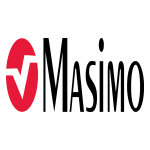NEUCHATEL, Switzerland–(BUSINESS WIRE)–Masimo (NASDAQ: MASI) today announced the results of a prospective study published in the International Journal of Neonatal Screening in which researchers in Marrakesh, Morocco, conducted the first Moroccan study on critical congenital heart disease (CCHD) screening for newborns using Masimo SET® pulse oximetry.1 The authors concluded that “Our results encourage us to strengthen screening for CCHD by adding pulse oximetry to the routine newborn screening panel.”
Dr. Slitine and colleagues sought to improve early detection of CCHD in Morocco by studying the feasibility of implementing CCHD screening using pulse oximetry. From March 2019 to January 2020, 8,013 asymptomatic newborns at Mother and Child Hospital (part of the Mohammed VI University Hospital of Marrakesh), who were “normal” according to neonatal examination using the current standard, were screened for CCHD in accordance with American Academy of Pediatrics (AAP) guidelines, including pre- and post-ductal oxygen saturation measurement, using Masimo Rad-97® and Radical-7® Pulse CO-Oximeters® with Masimo SET® pulse oximetry sensors.
The researchers found that, of the 8,013 infants screened, 7,998 newborns had a negative screen (99.82%) and 15 newborns were screen positive (0.18%). Of those 15, five were later diagnosed with CCHD and five with non-critical CHD; five were false positives (three of which had other underlying conditions). Of the 7,998 infants who passed, there was one false negative, an infant who was later diagnosed, at 2 months of age, with coarctation of the aorta.
The researchers noted that the screening test was “easy, simple, reliable, reproducible, acceptable, discriminating, well-accepted by parents and caregivers, and did not involve parental anxiety.” They also noted that “Pulse oximetry has a good specificity and sensitivity and thereby fulfills the criteria for screening. Additionally, most of the data in the literature suggest a favorable cost-effectiveness of this technique.”
The authors concluded, “Screening for CCHD is a reliable method for the early detection of critical congenital heart disease and even non-cardiac conditions. We think that it will have positive repercussions on infant mortality and morbidity in Morocco. It is an optimal test and it adapts perfectly to our context. We hope to implement it locally and nationally, as consistent with international best practice for newborn screening, to allow for timely detection of the infants born with CCHD in Morocco.”
Although the researchers at times use the term pulse oximetry generally, the specific pulse oximetry technology used in this study, as noted, was Masimo SET®. To date, six other large published CCHD screening studies,2-7 as well as additional, smaller studies,8-9 have used Masimo SET®. Cumulatively, the large studies represent 284,800 infants, which includes the largest CCHD study to date, of 122,738 newborns.2 All of these CCHD studies with Masimo SET® pulse oximetry showed improved screening sensitivity with the use of Masimo SET® alongside clinical assessment when compared to routine physical exam alone. With its ability to accurately measure through motion and low perfusion, alongside its performance in outcome studies, Masimo SET® stands out as the established choice of pulse oximetry technology for clinicians and policy makers hoping to implement CCHD screening processes.10
@MasimoInnovates | #Masimo
About Masimo
Masimo (NASDAQ: MASI) is a global medical technology company that develops and produces a wide array of industry-leading monitoring technologies, including innovative measurements, sensors, patient monitors, and automation and connectivity solutions. Our mission is to improve patient outcomes and reduce the cost of care. Masimo SET® Measure-through Motion and Low Perfusion™ pulse oximetry, introduced in 1995, has been shown in over 100 independent and objective studies to outperform other pulse oximetry technologies.10 Masimo SET® has also been shown to help clinicians reduce severe retinopathy of prematurity in neonates,11 improve CCHD screening in newborns,2-9 and, when used for continuous monitoring with Masimo Patient SafetyNet™ in post-surgical wards, reduce rapid response team activations, ICU transfers, and costs.12-14 Masimo SET® is estimated to be used on more than 200 million patients in leading hospitals and other healthcare settings around the world,15 and is the primary pulse oximetry at 9 of the top 10 hospitals according to the 2019-20 U.S. News and World Report Best Hospitals Honor Roll.16 Masimo continues to refine SET® and in 2018, announced that SpO2 accuracy on RD SET® sensors during conditions of motion has been significantly improved, providing clinicians with even greater confidence that the SpO2 values they rely on accurately reflect a patient’s physiological status. In 2005, Masimo introduced rainbow® Pulse CO-Oximetry technology, allowing noninvasive and continuous monitoring of blood constituents that previously could only be measured invasively, including total hemoglobin (SpHb®), oxygen content (SpOC™), carboxyhemoglobin (SpCO®), methemoglobin (SpMet®), Pleth Variability Index (PVi®), RPVi™ (rainbow® PVi), and Oxygen Reserve Index (ORi™). In 2013, Masimo introduced the Root® Patient Monitoring and Connectivity Platform, built from the ground up to be as flexible and expandable as possible to facilitate the addition of other Masimo and third-party monitoring technologies; key Masimo additions include Next Generation SedLine® Brain Function Monitoring, O3® Regional Oximetry, and ISA™ Capnography with NomoLine® sampling lines. Masimo’s family of continuous and spot-check monitoring Pulse CO-Oximeters® includes devices designed for use in a variety of clinical and non-clinical scenarios, including tetherless, wearable technology, such as Radius-7® and Radius PPG™, portable devices like Rad-67™, fingertip pulse oximeters like MightySat® Rx, and devices available for use both in the hospital and at home, such as Rad-97®. Masimo hospital automation and connectivity solutions are centered around the Masimo Hospital Automation™ platform, and include Iris Gateway®, Patient SafetyNet, Replica™, Halo ION™, UniView™, UniView: 60™, and Masimo SafetyNet™. Additional information about Masimo and its products may be found at www.masimo.com. Published clinical studies on Masimo products can be found at www.masimo.com/evidence/featured-studies/feature/.
ORi and RPVi have not received FDA 510(k) clearance and are not available for sale in the United States. The use of the trademark Patient SafetyNet is under license from University HealthSystem Consortium.
References
- Slitine N, Bennaoui F, Sable C, Martin G, Hom L, Fadel A, Moussaoui S, Inajjarne N, Boumzebra D, Mouaffak Y, Younous S, Boukhanni L, Maoulainine F. Pulse Oximetry and Congenital Heart Disease Screening: Results of the First Pilot Study in Morocco. Int J Neonatal Screen 6(53). 30 June 2020.
- Zhao et al. Pulse oximetry with clinical assessment to screen for congenital heart disease in neonates in China: a prospective study. Lancet. 2014 Aug 30;384(9945):747-54.
- de-Wahl Granelli A et al. Impact of pulse oximetry screening on the detection of duct dependent congenital heart disease: a Swedish prospective screening study in 39,821 newborns. BMJ. 2009;Jan 8;338.
- Ewer AK et al. Pulse Oximetry Screening for Congenital Heart Defects in Newborn Infants (Pulseox): A Test Accuracy Study. Lancet. 2011 Aug 27;378(9793):785-94.
- de-Wahl Granelli A et al. Noninvasive Peripheral Perfusion Index as a Possible Tool for Screening for Critical Left Heart Obstruction. Acta Paediatr 2007; 96(10): 1455-9.
- Meberg A et al. First Day of Life Pulse Oximetry Screening to Detect Congenital Heart Defects. J Pediatr 2008; 152:761-5.
- Schena F et al. Perfusion Index and Pulse Oximetry Screening for Congenital Heart Defects. J Pediatr. 2017 Apr;183:74-79.
- Hamilçıkan S, Can E. Critical Congenital Heart Disease Screening With a Pulse Oximetry in Neonates. J Perinat Med. 2018 Feb 23;46(2):203-207.
- Jawin V et al. Beyond Critical Congenital Heart Disease: Newborn Screening Using Pulse Oximetry for Neonatal Sepsis and Respiratory Diseases in a Middle-Income Country. PLoS One. 2015; 10(9): e0137580.
- Published clinical studies on pulse oximetry and the benefits of Masimo SET® can be found on our website at http://www.masimo.com. Comparative studies include independent and objective studies which are comprised of abstracts presented at scientific meetings and peer-reviewed journal articles.
- Castillo A et al. Prevention of Retinopathy of Prematurity in Preterm Infants through Changes in Clinical Practice and SpO2 Technology. Acta Paediatr. 2011 Feb;100(2):188-92.
- Taenzer AH et al. Impact of pulse oximetry surveillance on rescue events and intensive care unit transfers: a before-and-after concurrence study. Anesthesiology. 2010:112(2):282-287.
- Taenzer A et al. Postoperative Monitoring – The Dartmouth Experience. Anesthesia Patient Safety Foundation Newsletter. Spring-Summer 2012.
- McGrath SP et al. Surveillance Monitoring Management for General Care Units: Strategy, Design, and Implementation. The Joint Commission Journal on Quality and Patient Safety. 2016 Jul;42(7):293-302.
- Estimate: Masimo data on file.
- http://health.usnews.com/health-care/best-hospitals/articles/best-hospitals-honor-roll-and-overview.
Forward-Looking Statements
This press release includes forward-looking statements as defined in Section 27A of the Securities Act of 1933 and Section 21E of the Securities Exchange Act of 1934, in connection with the Private Securities Litigation Reform Act of 1995. These forward-looking statements include, among others, statements regarding the potential effectiveness of Masimo SET®, Rad-97®, and Radical-7® for CCHD screening for newborns and its potential impact on infant mortality and morbidity. These forward-looking statements are based on current expectations about future events affecting us and are subject to risks and uncertainties, all of which are difficult to predict and many of which are beyond our control and could cause our actual results to differ materially and adversely from those expressed in our forward-looking statements as a result of various risk factors, including, but not limited to: risks related to our assumptions regarding the repeatability of clinical results; risks related to our belief that Masimo’s unique noninvasive measurement technologies, including Masimo SET®, Rad-97, and Radical-7, contribute to positive clinical outcomes and patient safety; risks related to our belief that Masimo noninvasive medical breakthroughs provide cost-effective solutions and unique advantages; risks related to COVID-19; as well as other factors discussed in the “Risk Factors” section of our most recent reports filed with the Securities and Exchange Commission (“SEC”), which may be obtained for free at the SEC’s website at www.sec.gov. Although we believe that the expectations reflected in our forward-looking statements are reasonable, we do not know whether our expectations will prove correct. All forward-looking statements included in this press release are expressly qualified in their entirety by the foregoing cautionary statements. You are cautioned not to place undue reliance on these forward-looking statements, which speak only as of today’s date. We do not undertake any obligation to update, amend or clarify these statements or the “Risk Factors” contained in our most recent reports filed with the SEC, whether as a result of new information, future events or otherwise, except as may be required under the applicable securities laws.
Contacts
Media Contact:
Masimo
Evan Lamb
949-396-3376
elamb@masimo.com


